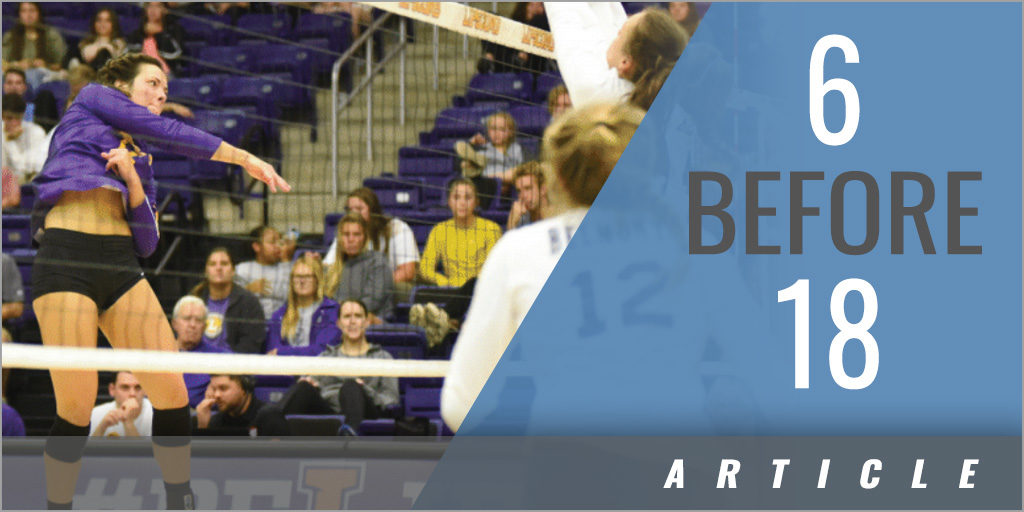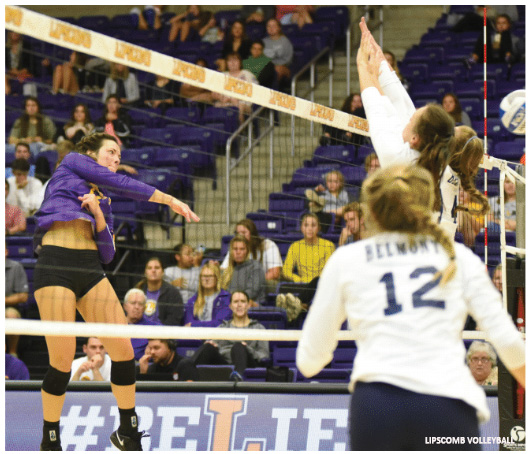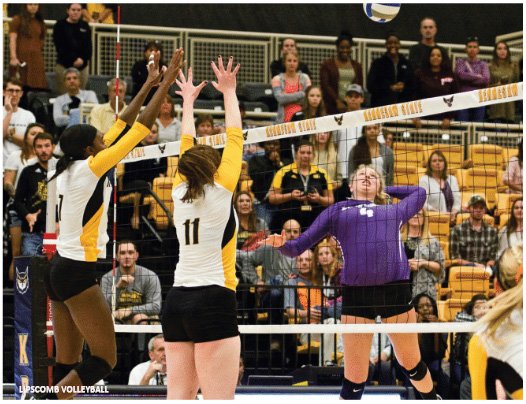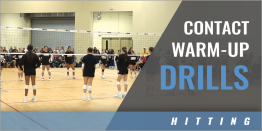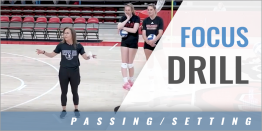|
By: Nate Thompson, Assistant Coach - Lipscomb University Originally Published in: Coaching Volleyball Copyright and Provided by: American Volleyball Coaches Association Halfway through our non-conference schedule this season, our staff identified that our ability to First Ball Side-Out (FBSO) needed some work. We discussed at length how we wanted to structure a drill that could improve our FBSO ability while still indirectly improving other areas of our game. The drill we came up with was "6 Before 18," and it has shown tangible benefits over the course of our conference season. Since early September we did this drill probably 12-15 times. In that time, we saw our FBSO percentage improve an average of 4% per rotation. SCORING A-Side: Must earn six FBSOs (one in each rotation - staying in that rotation until they get a kill) before the B-Side reaches 18 total points. The kill only counts if it comes on a play where the A-Side has a perfect pass. You can reduce the difficulty level for your group by eliminating the need for a perfect pass. B-Side: Must score 18 total points (can score on anything - their earned points and all of the A-Side errors) before the A-Side earn six FBSOs. DRILL EXPLANATION 6 Before 18 is structured as opposite volleyball - meaning the winning team will receive the serve instead of serving. This is due to the focus of the game being side-out scoring. You want to be receiving so that your side can have the opportunity to score first. Every ball is played out until a point is scored by either team.
The B-Side will begin with the serve. The scoring incentivizes that they serve as tough as possible and challenge the A-Side passers since there is no consequence for a missed serve. While this doesn't necessarily improve the B-Side's ability to serve, it does put the A-Side passers in tougher situations. It also allows your B-Side to take more risks offensively. It proves to be a great way to add to their toolbox and try some things that they may not feel comfortable attempting during normal rally scoring. If you want to keep the serves tough but realistic from your B-Side serves, you can institute some sort of point penalty system for missed serves (e.g. minus one point for every third missed serve). In our gym, we want our B-Side serves to remain as tough as possible, so we do not penalize the missed serves.
If A-Side wins the point off of anything that is not a FBSO, then that play is a wash. A-Side will still receive serve because they won the point (receiving in the same rotation that they were in last). If B-Side wins the point, then they will receive serve. At this point, the focus shifts for the A-Side. They will need to defend well enough to create an opportunity to get a transition kill; otherwise they'll be relying on the B-Side to make an error. This is a part of the drill that has a huge indirect benefit. While there are not any immediate points gained from getting a transition kill, your A-Side will have more opportunities to earn another FBSO. Plus, if your ability to score in transition offense is improving, that's always a good thing! |
